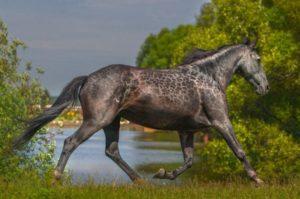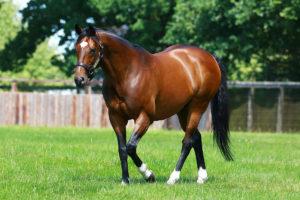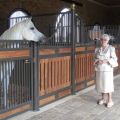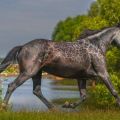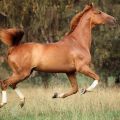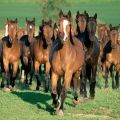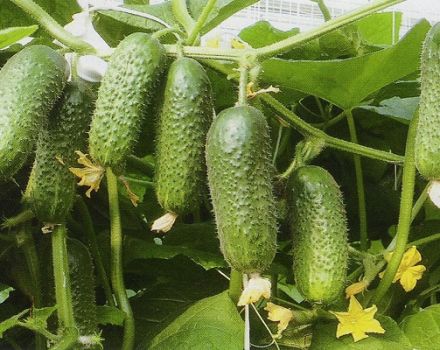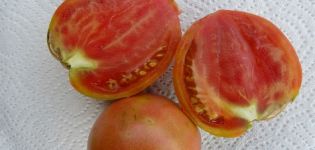Description of purebred Arabian horses and rules for caring for them
About 2 thousand years ago, a horse breed was developed in the Middle East, which had a huge impact on horse breeding around the world. The unusual appearance and agility of Arabian horses made them the most attractive and expensive pets from the 10th century to the present. Through crossing, new European breeds were bred.
Origin of the species and legend
The ancestors of the Arabian horses were wild horses that lived on the Arabian Peninsula. The nomadic tribes fought incessant wars. In the conditions of semi-deserts and deserts, war horses with a certain set of quality characteristics were needed.
"Arabs" should have been:
- hardy;
- easy to train;
- unpretentious;
- frisky.
The formation of the breed was influenced by the climate and the selection requirements of the nomads. Thoroughbred horses were the main wealth of the Arabians. Initially, the breed had 5 types, the origin of which is explained by the myth of Muhammad. The Prophet drove a herd of horses across the desert. Seeing the oasis, he let them go to a watering hole, but without giving them a drink, he called them to him. Obedient turned out to be 5 mares, which Muhammad left for breeding (Al-Hamsa, or five). According to another legend, Allah created a horse from the south wind, and the Bedouins named it Drinking Wind.
Advantages and disadvantages of the breed
The advantages of the "Arabs" are in harmonious physical development. Hardy, strong, playful, beautiful, they can be used as work horses, for riding, sports. Excellent health is inherent in them by nature: heat and dry air do not affect performance.
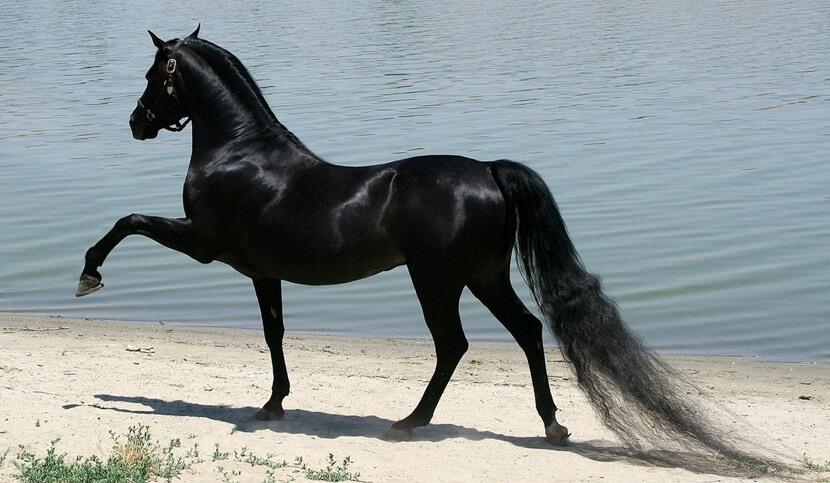
Long-term contact with humans has developed memory, intelligence in animals, formed a friendly and flexible character with a hot temperament.
The disadvantage of "Arabs" is low growth. Lightweight, compact horses are inferior in speed to thoroughbred horses.
Full description and exterior
The arid climate of the Arabian Peninsula, sandy soil left an imprint on the physical condition of Arabian horses: physique, structure of hooves. Characteristic features of the breed in question:
- small stature (154/164 centimeters at the withers mare / stallion);
- lean cereal;
- wide-breasted;
- with an elongated neck;
- strong bone;
- with strong hooves;
- with a raised turnbuckle;
- life expectancy up to 30 years;
- agility in all types of gallop;
- gracefulness of movements during the race;
- the ability of mares for long-term reproduction.
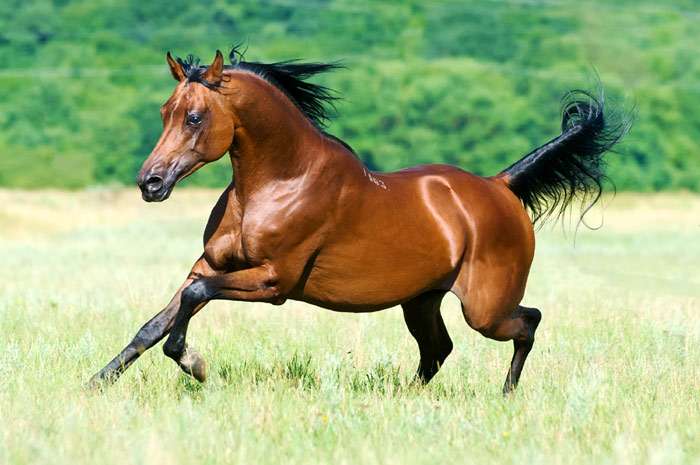
On the curved neck there is a small square head with small ears, convex, expressive eyes, a slightly concave bridge of the nose. The body is round. The croup is straight, elongated.
Varieties and suits
Arabian horses are classified according to 4 intra-breed types:
- Siglavi. Graceful horses, with pronounced breed characteristics. The predominant suit is gray.
- Coheilan. Broad-chested, with massive bones, very hardy, playful. The color is bay or red.
- Hadban. Strong horses with simple conformation, agility and high performance.
- Koheilan-siglavi. Horses resembling a siglavi in appearance, but taller and wider in bone. There are bay, red, gray colors.
Crossing "Arabs" with purebred riding representatives of the breed (English) gives offspring, which combines the best qualities of both breeds:
- taller and stronger than the "Arab";
- sleeker in exterior than "Englishman";
- the endurance and perseverance of the Arabian;
- agility and versatility of the "Englishman".

The Anglo-Arabian horse is not singled out as a special breed, but is a kind of half-breed. When breeding it, it is necessary to fulfill the only requirement: at least 25% of Arab blood in the offspring.
Features of character and lifestyle
Long-term, close communication with humans influenced the mental development of animals, formed a special character. They are distinguished by intelligence and goodwill. A horse for a Bedouin is not a functional animal, but a friend who will not leave in trouble, under whose supervision you can leave the child.
The Bedouins took their favorite horses into their tent at night to protect them from the night cold. In the campaigns, in the absence of food, the horses were given dates and camel milk.
Where is the Arabian breed used?
Arabian horses, due to their agility, jumping ability, endurance, are used as racing and riding. These are animals created for sports, hunting fun, equestrian tourism.
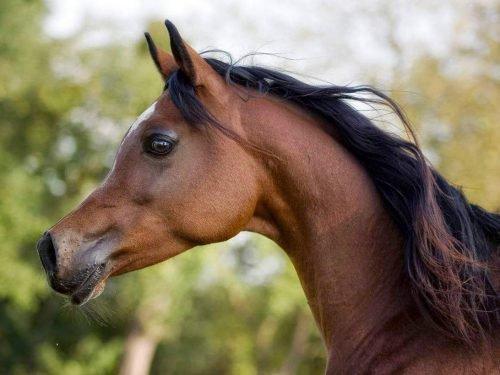
Rules for keeping animals
Arabian horses do not require special conditions of keeping, since they are genetically strong and hardy animals. But, given the cost of purebred horses, the organization of care and maintenance must be at the highest level.
Stable arrangement
In a well-ventilated room, a constant temperature should be maintained, in the range of + 5 ... + 15 degrees, with an air humidity of 50-60%. Feeders are placed 1 meter from the floor. Pallet depth - 0.5 meters. Ceiling height - 3-3.5 meters. Windows are placed at a height of at least 2 meters. The den should be spacious.
The floor in the stall is made of concrete with clay and lined with a layer of sawdust and straw (10-20 centimeters). The bedding is poured daily. Once every 7 days, it is completely changed, the floor is washed and dried without animals.
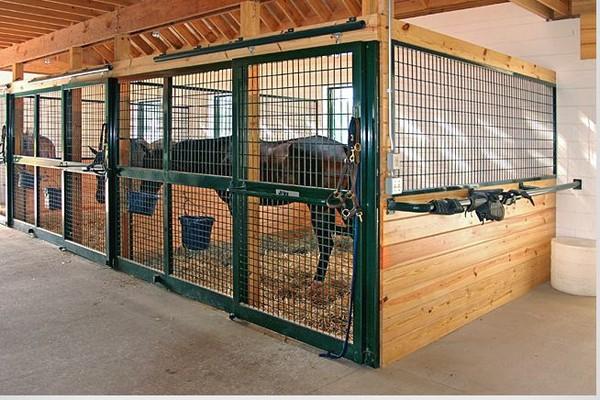
Feeding and drinking
The trough should contain the food needed to satisfy hunger and gum. Water is given before feeding 4-5 times a day. The swill temperature is +15 degrees. The consumption rate is 50 liters per day in hot weather, 30 liters in the cold season. After active physical activity, the horse is allowed to the water no earlier than 30 minutes later. Trainings, performances in competitions should begin one hour after eating.
New feeds are introduced gradually, over 2 weeks, so that the digestive system has time to rebuild.
Basic diet
The horse's diet is based on fresh alfalfa hay, wheat, oats. Daily intake (kilograms):
- hay - 5, divided into 5 portions throughout the day;
- wheat - 5;
- oats - 5 (7 - for sports horses).
Additionally, they give 1 kilogram of bran (wheat / oat), steamed flaxseed.
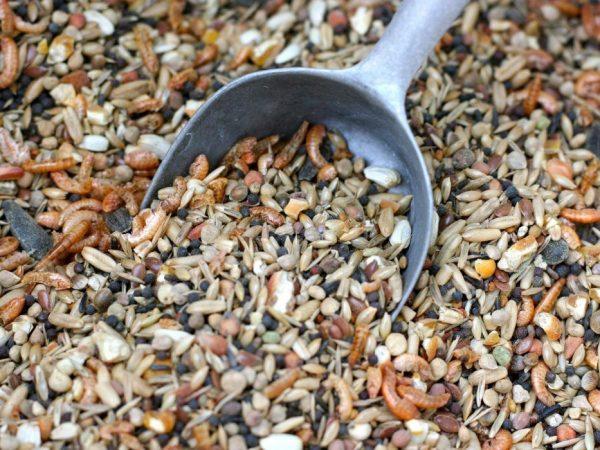
Nutritional supplements
Fresh vegetables and fruits are included in the diet as a source of fiber. Yeast is given to assimilate fiber.It is necessary to include in the diet fish oil, vegetable oil. For sport horses, the protein is increased from legumes.
Body and mane care
The Arabians have thin skin. You should not wash your horse at air temperatures below 15 degrees Celsius, so as not to cause hypothermia and pneumonia. In the warm season, the animal is washed every day. To clean wool, use a tool made of natural hair, whalebone, rubber, plastic. They clean the dirt with scrapers, then brush the wool with brushes, starting from the neck to the back, going down to the sides, stomach, legs.
The torso, neck and legs are washed with a sponge, then dried with a velvet cloth. With another sponge, wash the muzzle, wipe it dry. The mane with bangs and tail are washed with a special shampoo, combed with a wooden comb. Hooves are cleaned with a hook. At the end of the procedure, use a vacuum cleaner for final drying.
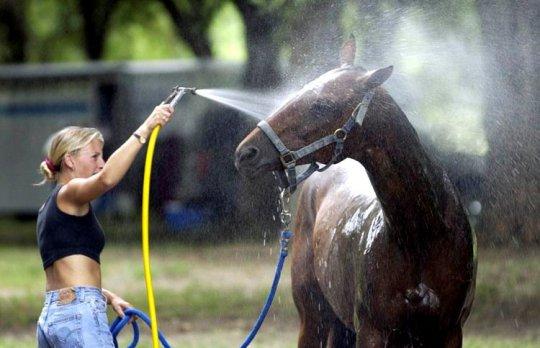
Grazing
Arabian horses require 2 daily walking. Pens should be located next to the stable and have fencing. At temperatures below 15 degrees, the walking time is limited or carried out at a high pace.
Horseshoe
The type of horseshoe depends on the season and purpose. It can be a universal horseshoe, orthopedic (for horse races), studded (winter).
Disease prevention measures
One of the signs of improper nutrition of Arabian horses is stomach cramps. For their prevention, it is necessary to give fresh, high quality feed, with a sufficient amount of fiber. Introduce new complementary foods into the diet within 2 weeks. For tetanus, lichen, rabies, anthrax, flu, vaccinations are given at a certain age. Every six months, blood is taken for analysis of glanders, anemia, and leptospirosis.

Breeding specifics
"Arabs" are bred as a horse breed in order to:
- further sale of young animals;
- participation in competitions and contests;
- for horseback riding.
When reproducing Arabian horses, herd keeping is recommended for profit (sale).
Herd keeping has a beneficial effect on young horses. They grow stronger, more efficient than alone.
Care staff are selected from people who have the skills to communicate with large pets, who are positive about the requirements of the breeder / owner for care. To train an Arabian horse, you need an experienced trainer with a strong and resolute character.
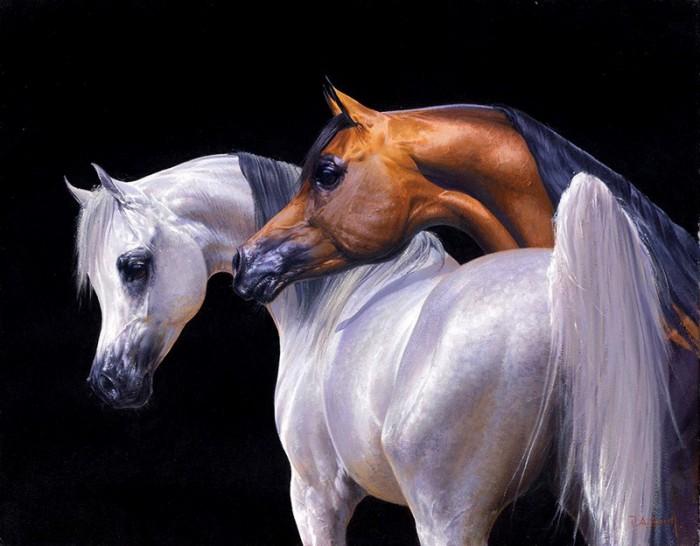
Interesting facts about Arab horses
Crusaders brought Arab horses to Europe. Thanks to the horses from the East, riding, harness breeds, heavy trucks were bred:
- English horse;
- berberian;
- Andalusian;
- lusitano;
- Oryol trotters;
- Terskaya;
- percheron.
In Russia, Arabian horses appeared during the reign of John IV (the Terrible). Crossbreeding of oriental horses with local breeds improved the exterior and physical characteristics of such breeds as Don, Kabardian. After 300 years in the Russian Empire, 50 stud farms were engaged in the selection of fighting and hunting horses, where Arab stallions were the producers. The most famous is the Tersk stud farm of Count Stroganov.
In the 30s of the XX century, pedigree work was continued at the stud farms of the USSR by acquiring livestock in European countries. It became the basis for the formation of a new type of horse: the "Russian Arab". Externally, these were highly bred horses of the Siglavi type, but with a higher working capacity.
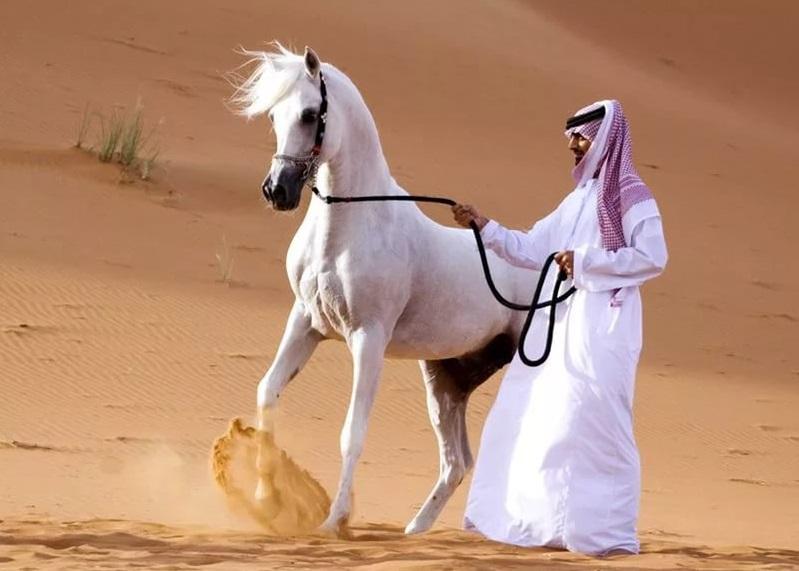
The stallion Aswan, a gift from the President of Egypt, GA Nasser, to the Soviet Union for the construction of the Aswan Dam, became an outstanding producer. Foals from Aswan became the "gold fund" of Arab horse breeding: 150 heads were sold at international auctions, 100 (70 mares and 30 stallions) were used for breeding.In the next 20 years, horses born in Russia gained worldwide recognition thanks to victories at major international competitions and exhibitions. The most expensive "Russian Arab" was sold for $ 5 million.
The cost
The unique qualities of purebred Arabian horses have made them the most popular breed for breeding and selection work. At international auctions, the cost of one "Arab" can reach several million dollars. The highest price paid was for the Padrone stallion: $ 11 million.
The cost of a thoroughbred horse depends on:
- from the pedigree;
- parenting achievements;
- manufacturer's reputation;
- her health and condition.
The lowest price for an Arabian horse is 50,000 euros.
